

Andrew Maclean
3 Days Ago
In 2007 there were so many strange, different and affordable convertibles you could buy. What happened to the affordable convertible?
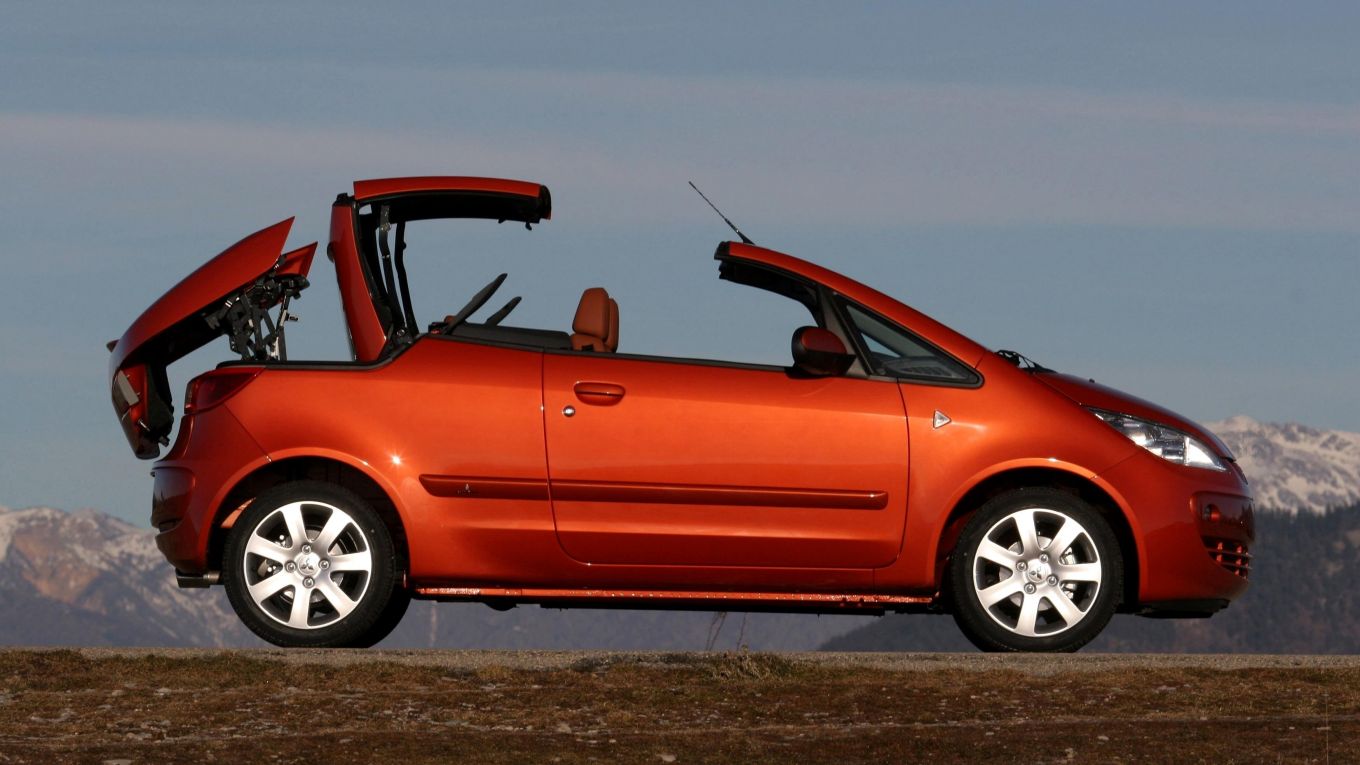
Picture it. It’s 2007 and you’re in the market for an affordable convertible. You want to feel the wind in your hair, or lack thereof, but you’re not after a sports car.
You were spoilt for choice. Name almost any manufacturer and it likely had a convertible option. Holden, Ford, Volkswagen, Peugeot, Citroen, and Mitsubishi all had them, and that’s just scratching the surface.
The number of affordable convertible options has unfortunately dwindled as the years have gone on, which raises a question: What happened to the affordable convertible?
Before we dive in, a brief history lesson. All early forms of automobiles were open to all of the elements. They had no doors, roof or windshield.
The 1896 Ford Quadricycle is a perfect example of this.
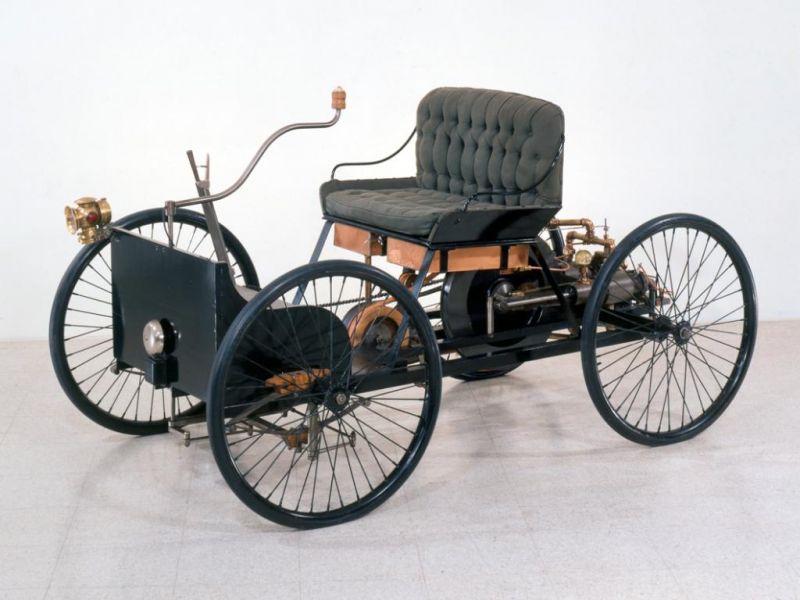

If any early 20th century automobile had a roof, it most likely had a thin, rudimentary fabric top.
When roofs became more prevalent, convertible (cabriolet, roadster, soft-top, spider, drop-top, or drophead) models were initially marketed as an upmarket product.
The first car with a power-folding hardtop roof was the Peugeot 601 Eclipse. This model was produced in 1934 and 1935, and was seen as a flagship vehicle for the French brand.
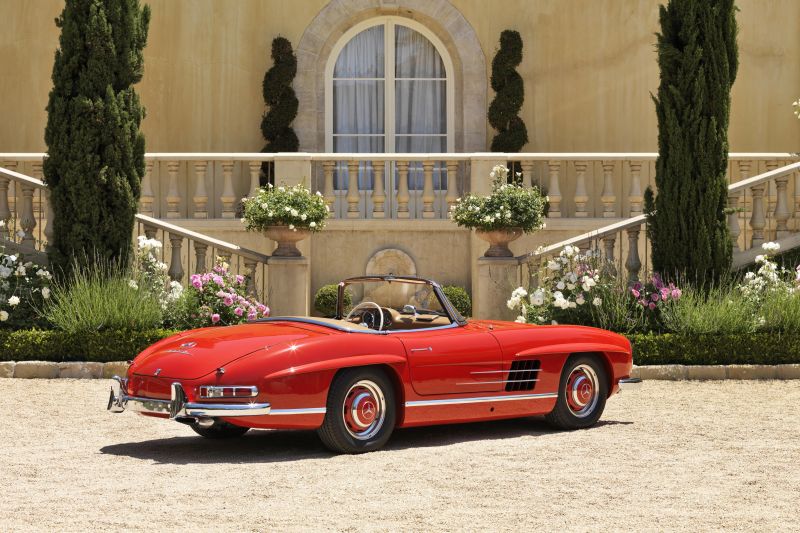
One iconic convertible still on sale is the Mercedes-Benz SL-Class.
Available in convertible form since 1957, the SL has spanned seven generations, with the eighth-generation Mercedes-AMG SL due in 2022.
Over the years, folding roof technology reached the mainstream. During the 2000s there was a surge of affordable convertibles on offer, many of which had folding hardtops.
Pitched as more interesting alternatives to boring hatchbacks or sedans, these weren’t necessarily weekend toys. They were family cars with folding tops.
Here are some of the best from the golden age (or should that be dark days) of affordable drop-top motoring.
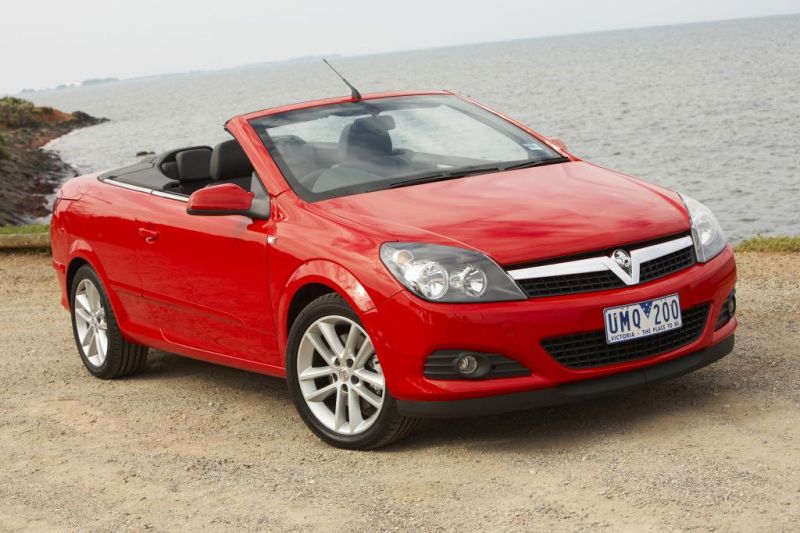
On offer from 2006 to 2009, the Holden Astra Twin Top was the last convertible Astra offered in Australia.
A fifth-generation AH Astra, it was manufactured in Belgium at Opel’s Antwerp factory.
Powered by a naturally-aspirated 2.2-litre four-cylinder engine producing 110kW of power and 210Nm of torque, the Astra Twin Top shared its engine with the hot Astra SRi.
This was mated to a six-speed manual, or an optional four-speed automatic transmission. The automatic was an extra $2000.
When new in 2006, a manual Astra Twin Top cost $45,490 before on-road costs. Prices didn’t change drastically during its life – it was offered in 2009 for $45,790 before on-roads in manual form.
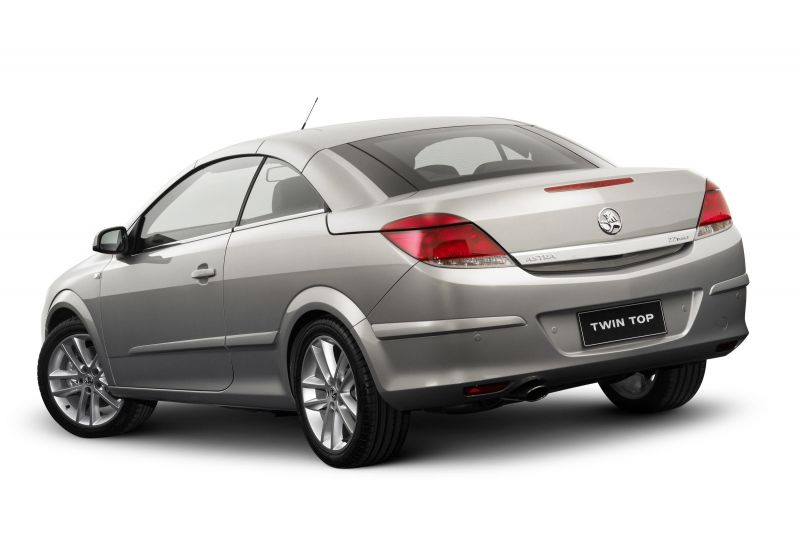
In other markets the Astra Twin Top was offered as a Vauxhall, as well as an Opel.
During its sales peak in 2007, Holden sold 1389 Astra Twin Tops according to VFACTS. It was only just outsold by the Volkswagen Eos (1436 sales).
Over the three years it was on sale, the main thing that the Astra Twin Top gained was two extra airbags, making a total of six.
Its main statement, the folding multi-piece hardtop, could operate at speeds of up to 30km/h and could be remotely opened.
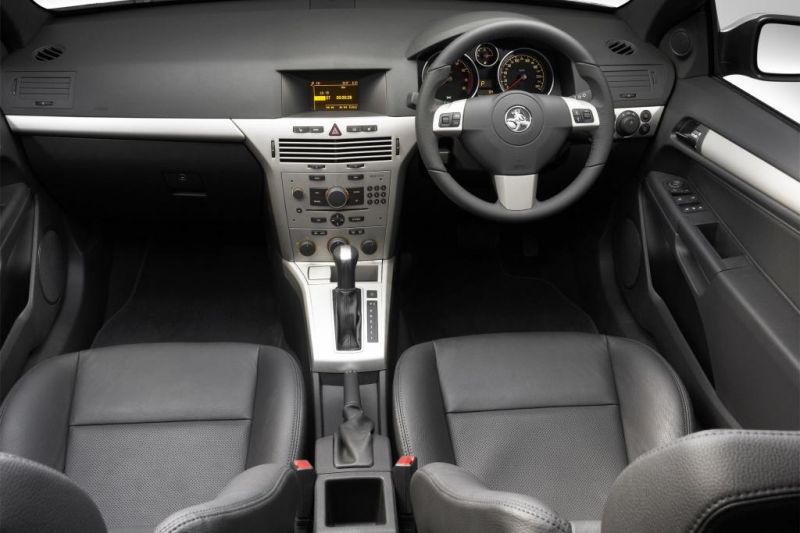
It used five electric motors, eight hydraulic cylinders, and 13 sensors to open or close the hardtop in around 30 seconds.
Some reports would suggest there were a few electrical gremlins with the hardtop, but overall the vehicle was solid. It also apparently had very good acoustic deadening.
The AH fifth-generation Holden Astra was discontinued in 2009 in favour of its successor, the Holden Cruze.
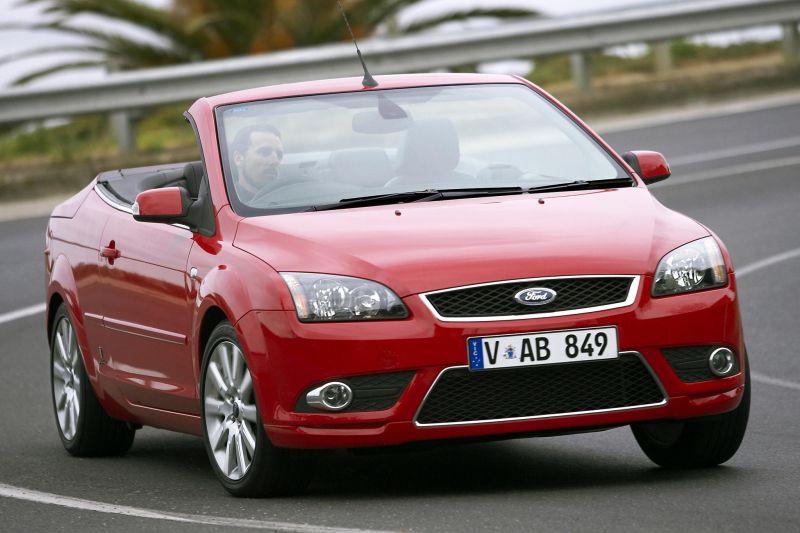
A direct competitor to the Holden Astra Twin Top, the Ford Focus Coupe Convertible (CC) always lived in the shadow of the Astra.
Only on sale for two years, 2007 and 2008, the Ford Focus CC was manufactured in Italy by the renowned design firm and coach-building company Pininfarina.
During its time in the Australian market, the Focus CC was $45,490 before on-road costs for the manual, perfectly matching the Astra.
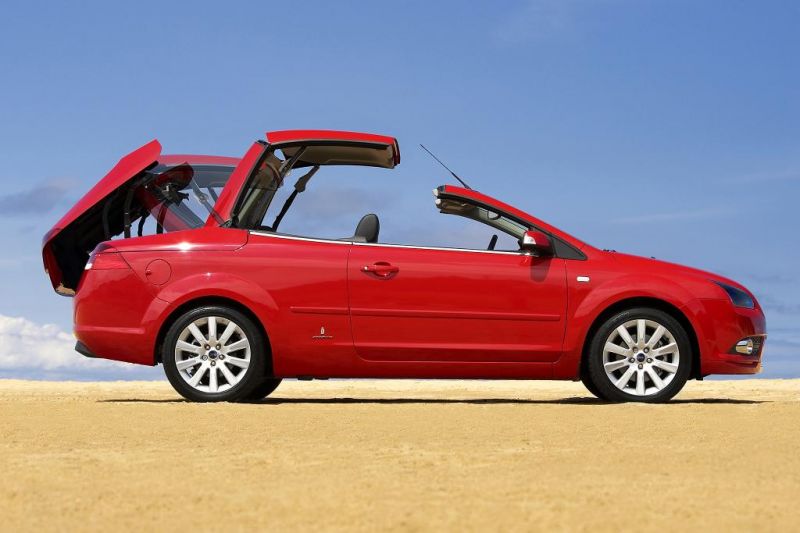
It was powered by a naturally-aspirated 2.0-litre ‘Duratec’ four-cylinder engine producing 107kW of power and 185Nm of torque.
The powertrain was mated to a five-speed manual or an optional four-speed automatic transmission. The automatic was an extra $2000.
The folding hardtop roof was split into two sections and could open in around 30 seconds.
Towards the end of its life here in Australia during 2008, the Focus CC received a light facelift with a redesigned front grille.
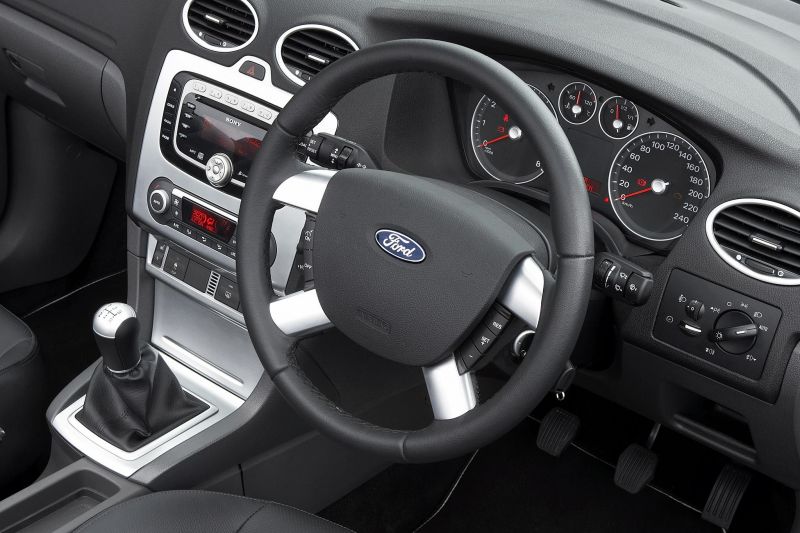
Even though the Focus CC was outsold by the Astra Twin Top, the Focus had a few features the Astra couldn’t match. The CC had an extra speaker (for a total of eight), dual-zone climate control rather than single-zone, and a cooled glovebox.
According to reports from the time, the Focus CC had superior paint and overall build quality compared to South African-built Focus hatchbacks.
In 2007, Ford managed to sell 109 Focus CCs according to VFACTS. It held a 1.1 per cent share of its sports car under $80,000 segment at the time.
The Ford Focus CC was discontinued in Australia after the affordable European convertible trend passed. Ford at the time was looking more into performance-oriented Focus variants such as the Focus ST and Focus RS.

In its second generation, the Renault Megane CC was designed by German convertible manufacturer, Karmann.
On sale in Australia between 2004 and 2010, it was manufactured at Renault’s Douai factory in France.
Exclusively powering the CC was a naturally-aspirated 2.0-litre producing 98kW of power and 191Nm of torque. This engine is familiar to the Renault range, and continues in turbo and non-turbo forms today.
This was mated to a six-speed manual or optional four-speed auto transmission. The automatic was an extra $2000.
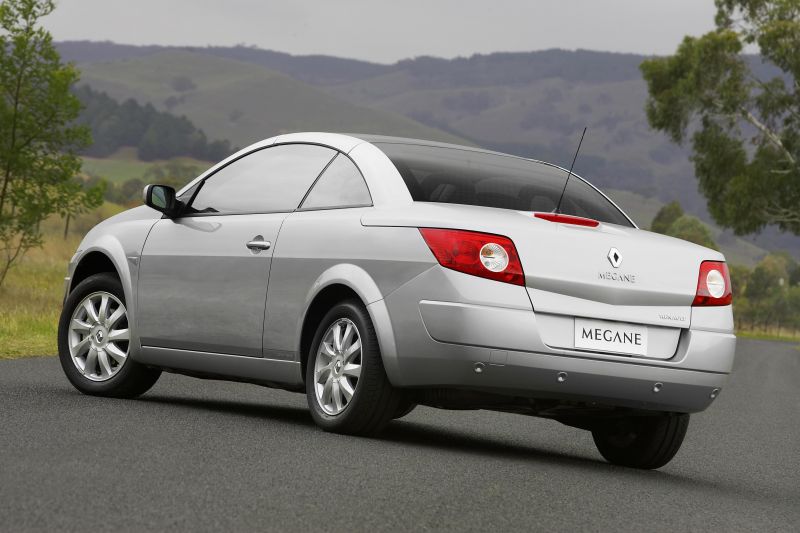
This second-generation Megane convertible replaced the soft-top roof seen in the original with a full-metal hardtop.
When it was on sale in Australia, the Megane CC was originally offered at $51,480 before on-road costs for the Dynamique auto in 2004, and fell to $48,990 before on-road costs for the Exception auto in 2010.
During its time on sale it received one mid-life update; for the 2007 model year. It received interior changes, different specification levels, and a new front fascia.
The folding hardtop could retract in 22 seconds with a cover in the boot needing to be in place for the operation to occur. The reason for this is because the roof significantly eats into the boot space.
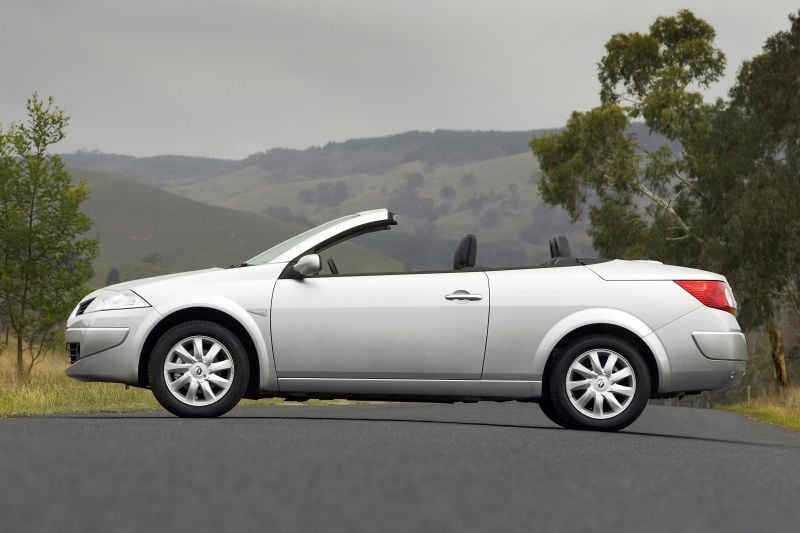
According to VFACTS, Renault sold 307 Megane CCs in 2007. It was not a best-seller in its segment, but middle of the pack.
The Renault Megane CC outsold the Volkswagen New Beetle Cabrio, Alfa Romeo Spider, and Ford Focus CC over the duration of this year.
Over the years it gained two more airbags, making a total of six, rear parking sensors, and a six-stacker CD player.

Standard features included keyless entry, automatic headlights, rain-sensing wipers, and a cooled glovebox.
According to reviews when new, the Megane CC felt a little creaky given the inherent lack of a fixed roof , and also felt quite heavy behind the wheel.
The Renault Megane CC continued on into its third generation and was sold in Australia until 2015, when it was discontinued.
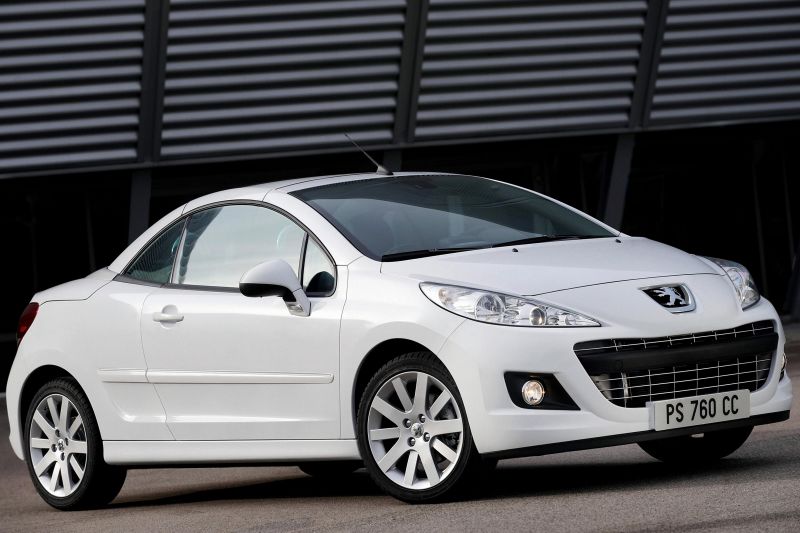
Replacing the 206 CC, the Peugeot 207 CC was built on a modified Citroen C3 platform.
On sale from 2007 until 2012, it was manufactured in Peugeot’s Poissy factory in France.
Powering the 207 CC was a choice of a naturally-aspirated 1.6-litre four-cylinder producing 88kW of power and 160Nm of torque, or a turbocharged 1.6-litre four-cylinder producing 110kW and 240Nm.
Naturally-aspirated variants were offered with a five-speed manual, or an optional four-speed automatic, where the turbo variants were exclusively offered with a five-speed manual.
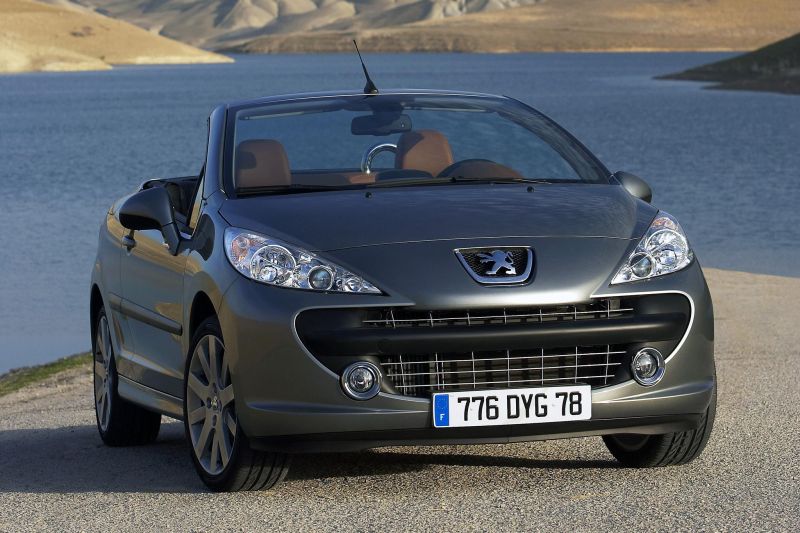
The turbo engine was developed in collaboration with BMW, and featured in the second-generation Mini Cooper S from the same time.
According to reviews at the time, the 207 CC Turbo was relatively sprightly and it felt quick around town.
The folding metal hardtop could open in around 25 seconds. Once it had folded away its roof, almost half of the boot space was swallowed.
The Peugeot 207 CC received a facelift in 2009 that brought a revised front fascia with relocated fog lights, along with LED tail lights.
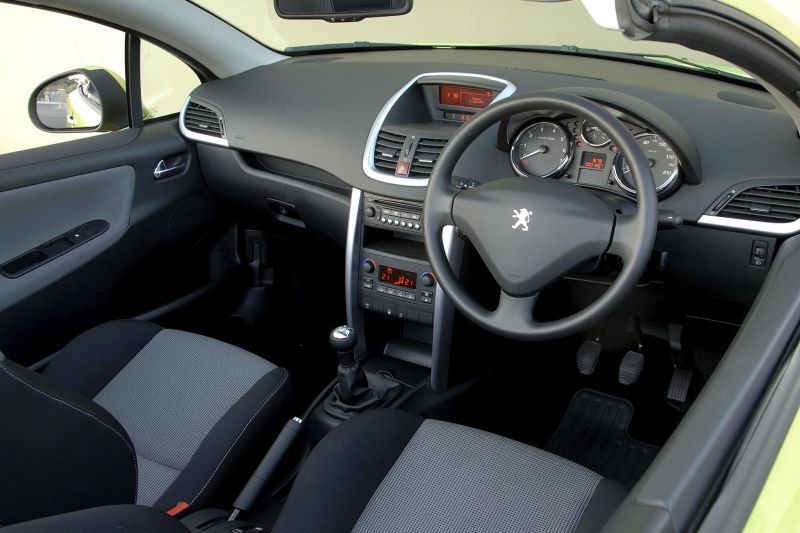
Over the years traction control, active rollover protection, a USB input, and Bluetooth were added to the car.
As standard, the Peugeot 207 CC featured a CD player with a six-speaker sound system, dual-zone climate control, electrically-adjustable and heated mirrors, and electric headlight adjustment.
In 2007, Peugeot sold a total 437 of 207 CCs according to VFACTS. During this time it held a 4.3 per cent market share of its segment.
The Peugeot 207 CC was discontinued in 2012 upon the arrival of its hatchback-only successor, the 208. Peugeot also offered a version of the 307 with a folding hardtop.
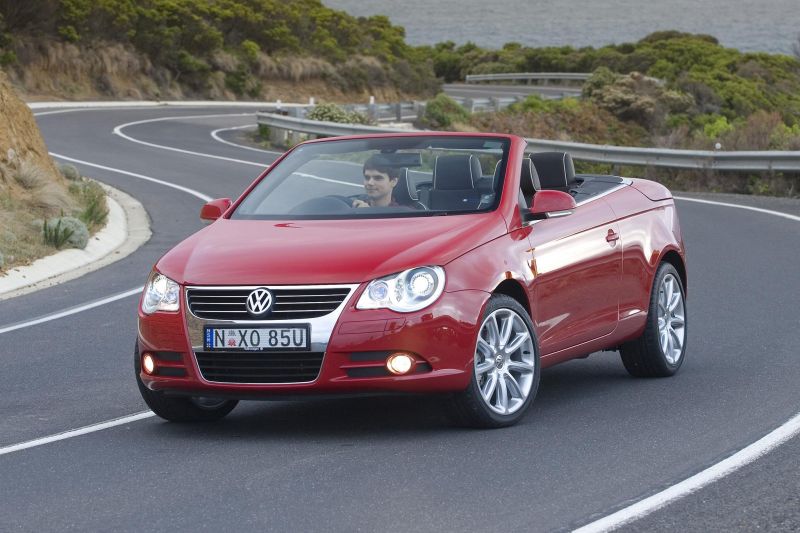
Initially introduced as the successor for the Golf cabrio, the Volkswagen Eos was eventually sold alongside it as a hardtop alternative. It was unique because it had a sliding panoramic sunroof inside its folding hardtop.
In Australia it was on sale from 2007 until 2014, and was manufactured at Volkswagen’s Palmela factory in Portugal.
This factory is still functional to this day, and solely produces the Volkswagen T-Roc.
The Eos was based on the Concept C debuted at the 2004 Geneva motor show, with the production model receiving a five-piece folding hardtop designed by German convertible company, Webasto.

This company designed the roof modules for the current Mazda MX-5 RF, as well as many others.
Available with either turbocharged diesel or petrol engines during its life, the Eos wasn’t underpowered – its 2.0-litre turbo four-cylinder petrol made a Golf GTI-matching 147kW of power in early models, albeit with 280Nm of torque.
This could be mated to a six-speed manual in early models or a six-speed DSG dual-clutch transmission exclusively in later models.
The 2.0-litre turbo-diesel produced 103kW and 320Nm, and could similarly be mated to a six-speed manual in early models, and a dual-clutch exclusively in later models.
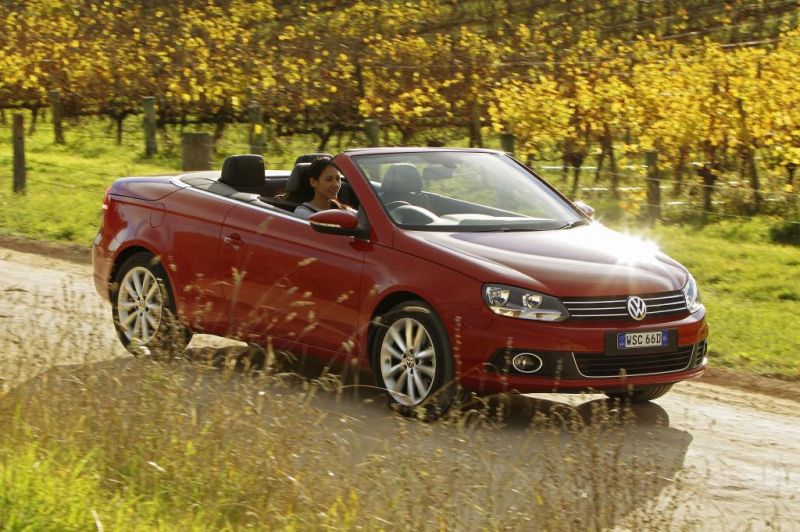
According to VFACTS, Volkswagen sold 1436 examples in 2007. With these figures, it was the top-selling sports car under $80,000 for the year and held a 14 per cent share of the segment.
The Eos received a facelift in 2012, where it was treated to revised front and rear fascias, and new head- and tail lights, side mirrors, and wheel designs. These were inspired by (or taken from) the sixth-generation Volkswagen Golf.
The hardtop roof in the Eos could retract in 25 seconds, with the boot capacity shrinking to 190L from 300L with the roof folded.
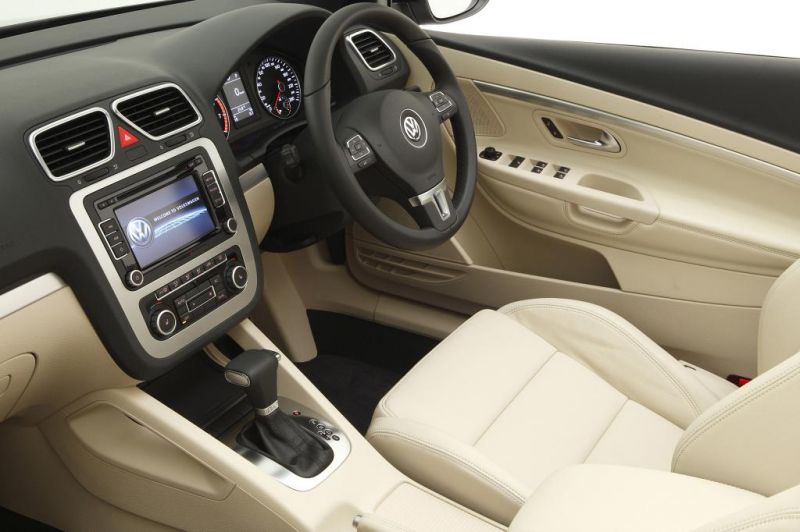
Reports from the time say earlier models had a different roof seal design that was prone to leaking. This was fixed in around 2009/10.
Locally discontinued in 2015, the Eos was still closely related to the fifth-generation Golf. The closest thing Volkswagen offers to a successor is the T-Roc cabriolet, which is not offered here.
It was also the last Volkswagen convertible to be offered with a metal hardtop.
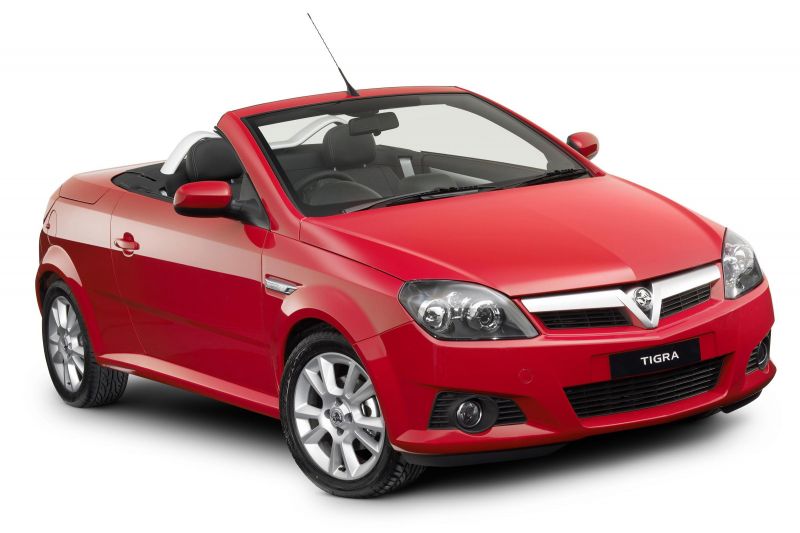
Only on offer here in Australia during the 2005 and 2006 model years, the Holden Tigra was a similar size to the Peugeot 207 CC.
The Tigra featured a power-folding hardtop roof produced by French coachbuilder, Heuliez, that could open in 18 seconds.
Based on the XC Barina, the Tigra was a two-seater and was also offered as an Opel, Vauxhall and a Chevrolet in other markets.
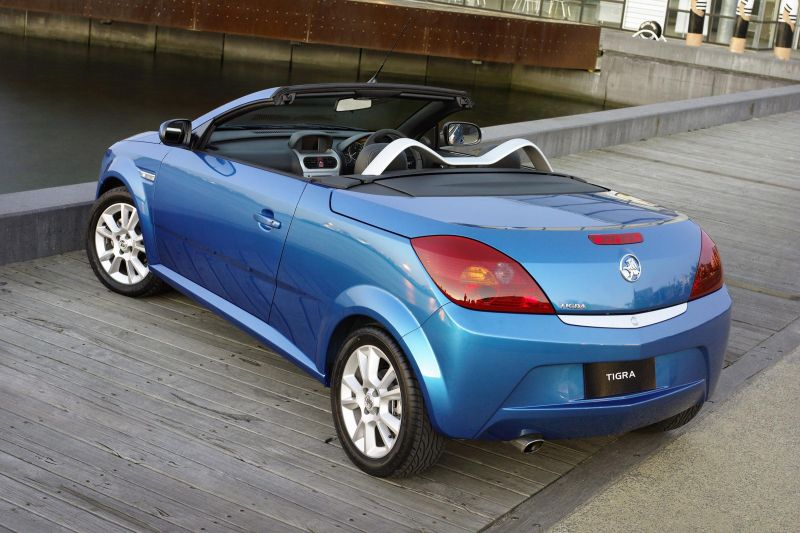
Marketed as the Tigra Twin Top in Vauxhall and Opel forms, Holden chose to call the small hardtop convertible just the Tigra instead.
Powered by the naturally-aspirated 1.8-litre four-cylinder used the XC Holden Barina SRi, it produced 90kW of power and 165Nm of torque. This was mated to a five-speed manual exclusively in Australia with no automatic available at all.
When on sale here in Australia, the Tigra was priced at $34,990 before on-road costs.
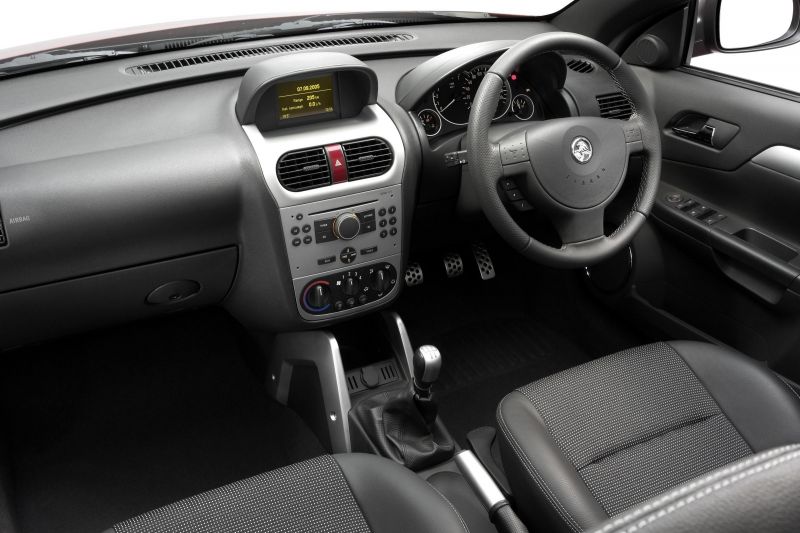
Reviews from the time said the Tigra was punchy to drive, but you couldn’t escape the added weight of the folding hardtop.
Holden managed to sell 117 Tigras in 2007 according to VFACTS, even though it had been discontinued the year prior.
Along with the standard (and heavily marketed) Europeanflair, the Tigra had standard features such a power-operated boot lid, front and rear fog lights, and heated side mirrors.
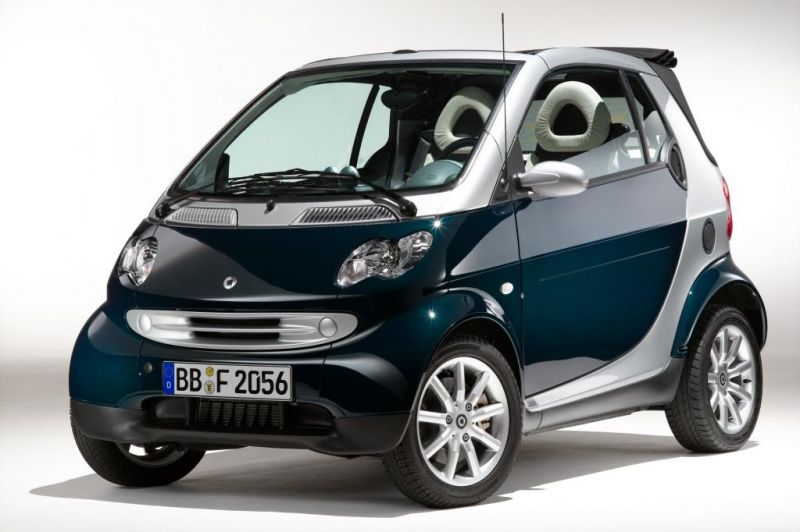
The Smart ForTwo was in between its first and second generations in 2007. For the sake of clarity, I’m going to be focusing on the first-generation model.
Beginning production in 1998 at Daimler’s Hambach factory in France, the ForTwo Cabrio made its way to Australian shores in 2004.
It was powered by an itsy-bitsy 0.7-litre turbocharged three-cylinder producing 45kW of power and 95Nm of torque. This was mated to a six-speed sequential manual transmission.
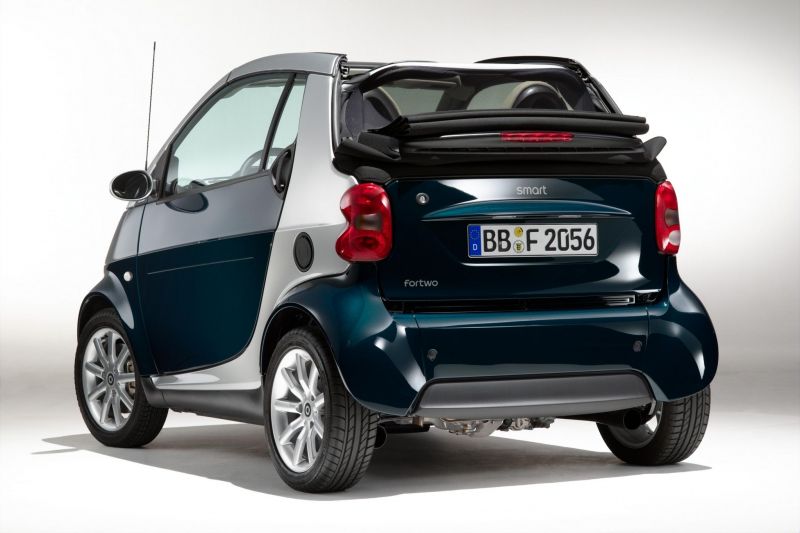
With this powertrain and the fact the ForTwo cabrio only weighed 990kg, Smart claimed a combined fuel consumption of 4.7L/100km.
In both coupe and cabrio form, the only trim available in Australia was the Pulse, equivalent to a mid-spec model overseas.
In 2006, the Smart ForTwo pulse cabrio cost $23,490 before on-road costs. It is the cheapest convertible featured in this article.

The cabriolet soft-top roof (which also had some manually-removable hard panels) could be lowered in around two minutes.
Relatively light on for contemporary safety features, the ForTwo only had two airbags. It also had ABS with brake assist, electronic brake force distribution (EBD), electronic stability control (ESC), corner braking, and a hill-hold function.
Standard features in the ForTwo included a two-speaker sound system with a CD player, air conditioning and front fog lights.
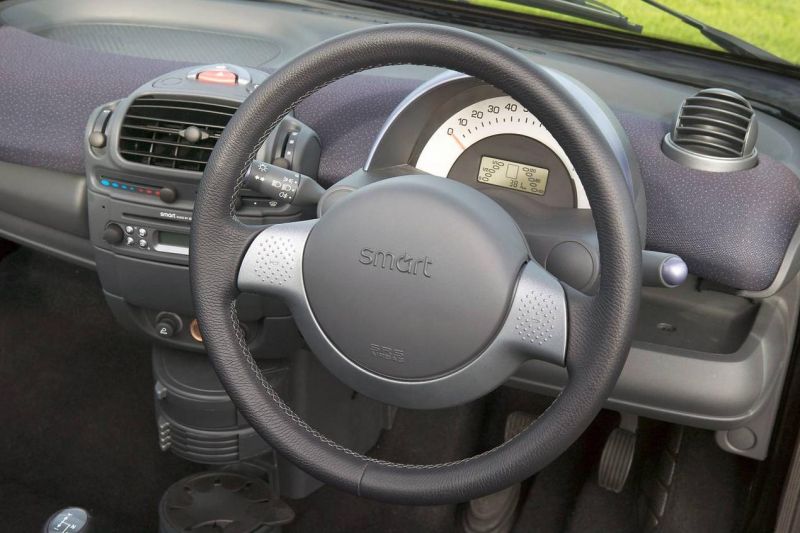
In 2007 Smart sold 434 ForTwo models according to VFACTS. This figure includes the regular ForTwo coupe as well.
A special edition of the ForTwo called the Crossblade was available in 2002 without a windshield, roof or proper doors. This was powered by a Brabus-tuned 0.6-litre turbocharged three-cylinder that produced 52kW. It was never available in Australia.
The second-generation ForTwo came to the Australian market in 2008 and was on sale until 2014. This model was discontinued, and the third-generation ForTwo is currently not offered in Australia.
In other markets the ForTwo Cabrio is still offered in all-electric form as the Smart EQ ForTwo Cabrio.
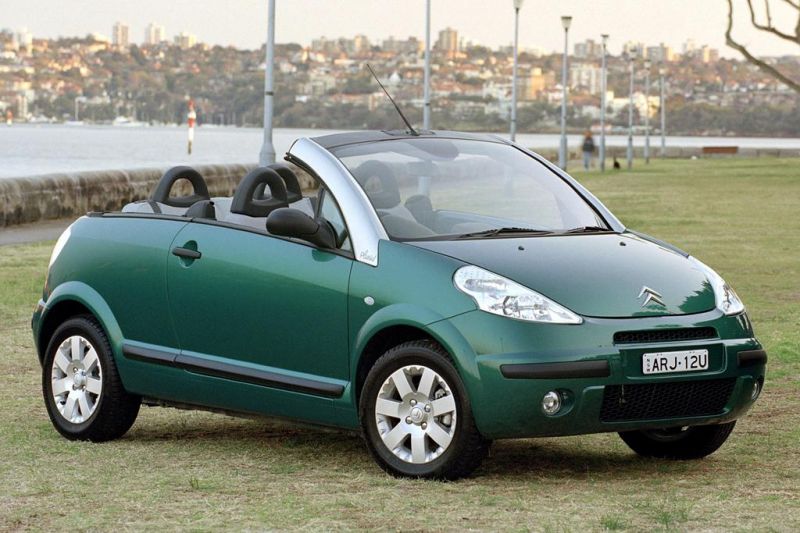
On sale from 2004 to 2010, the Citroen C3 Pluriel featured a landaulet-style convertible roof.
In Australia, the C3 Pluriel cost $31,490 before on-roads in 2004 when it debuted, and bowed-out priced at $29,990 before on-roads in 2010.
It was powered by a 1.6-litre naturally-aspirated four-cylinder engine producing 83kW of power and 147Nm of torque. This was mated to five-speed automated manual transmission.
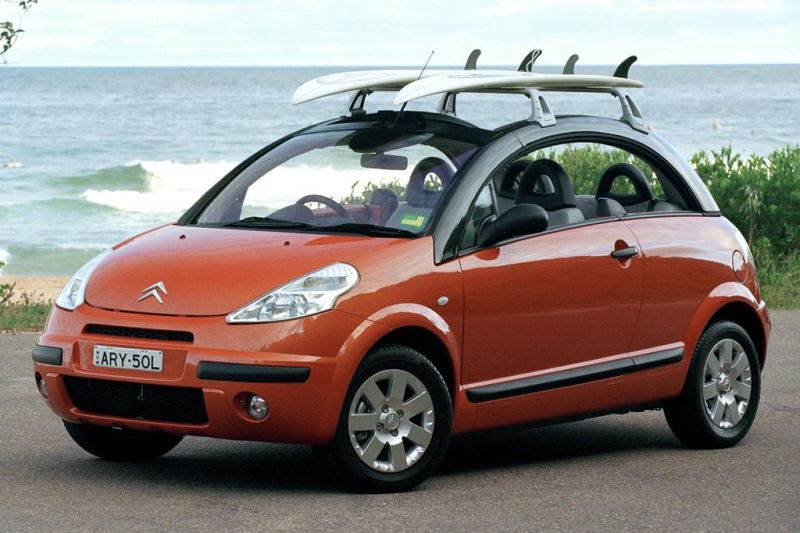
Based on the first-generation Citroen C3 platform, which was shared with the Peugeot 207, the Pluriel was exclusively manufactured at Citroen’s Madrid factory in Spain.
The convertible roof on the C3 Pluriel was made up of a multi-layered insulated canvas top and could be stopped anytime during the opening process.
The roof was housed between two removable 12kg arches that allowed the C3 Pluriel to achieve a completely pillar-less look. These could not be stowed in the car.
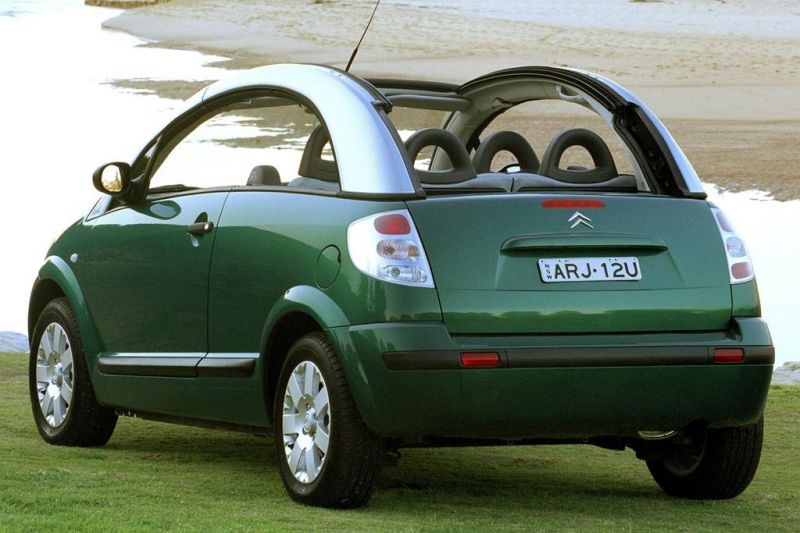
With all those moving parts, the C3 Pluriel roof could be opened in five different way.
The C3 Pluriel had automatic headlights with electric adjustment, front fog lights, rain-sensing wipers, heated mirrors, and a cooled glovebox.
In the year 2007, Citroen sold 696 examples of the C3 according to VFACTS. This sales figure includes the standard C3 hatchback as well.
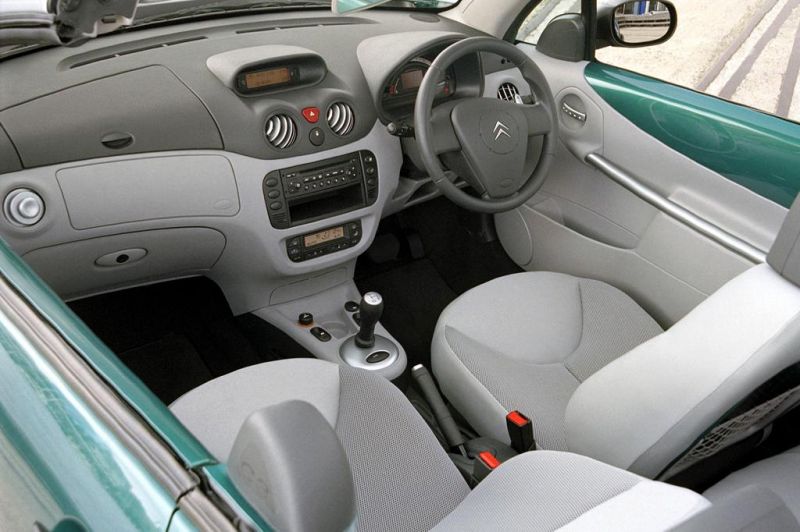
According to reviews from the time, the C3 Pluriel was well screwed-together and relatively light. Its purpose was always… questionable, though.
The Citroen C3 Pluriel was discontinued in 2010 and was followed with two compact convertibles.
First was the Citroen DS3 Cabrio sold in Australia between 2013 and 2016. The second is the Citroen E-Mehari, an all-electric compact SUV available in other markets. It has been on sale since 2016.

Volkswagen debuted its New Beetle, known as just the Beetle, here in Australia in liftback-only form during 2000. The cabriolet was added to the range in 2003.
The Beetle cabrio replaced the fourth-generation Golf Cabrio when it launched.
It was on sale until the 2011 model year where it was replaced by the sixth-generation Golf Cabrio.
All Beetles were manufactured at Volkswagen’s Puebla factory in Mexico.
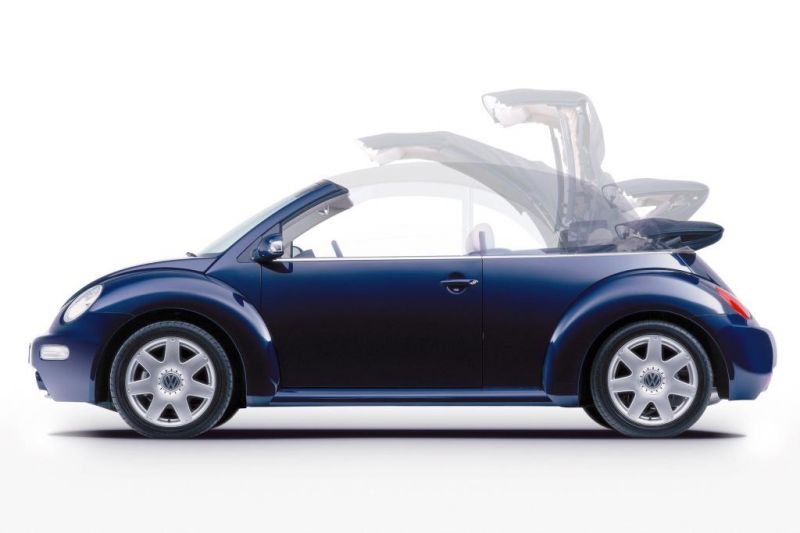
The Beetle received a facelift in mid-2005, with redesigned front and rear fascias, two extra airbags (for a total of six), and interior tweaks.
In order to fully retract the triple-layered soft-top, owners had to first unlatch the roof and then electronically it. Fully lowered, the soft-top would sit behind the rear seats and atop the boot.
With the folding roof mechanism it ate into the rear seat space, making the Beetle cabrio a four-seater instead of having five seats like the liftback.
When the Beetle Cabrio debuted in 2003, the range kicked off at $46,990 before on-road costs for a manual. In 2011, the range started at $37,700 before on-road costs for a manual.
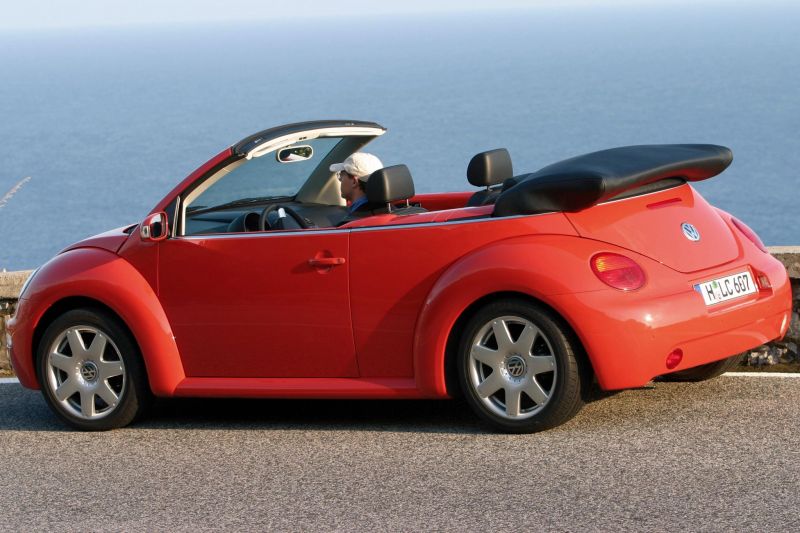
Powering the Beetle was a 2.0-litre naturally-aspirated four-cylinder engine producing 85kW of power and 172Nm of torque. This was mated to a five-speed manual or six-speed automatic.
There was a manual-shifting function that was dropped from the automatic in the 2006 model.
Reviews of the Beetle Cabrio signify the vehicle was a bit wobbly, which took the edge off the handling. It was also plagued by electrical issues and water leaking through the roof seals.
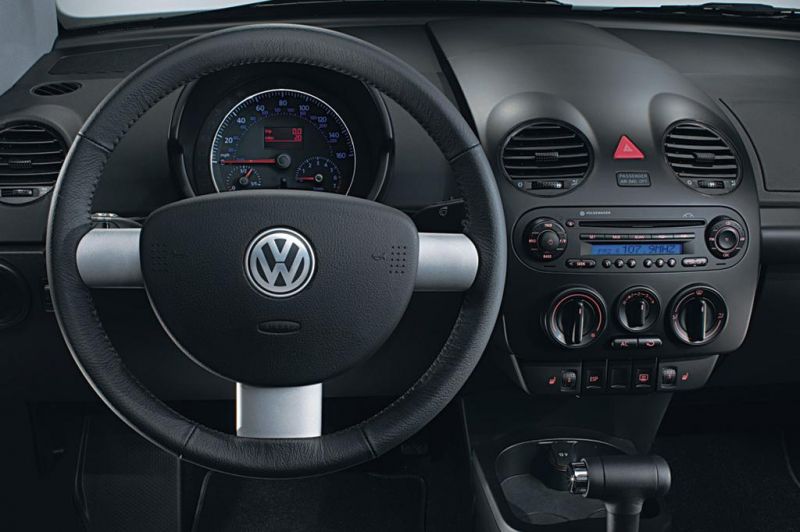
In 2007, Volkswagen sold 208 examples of the Beetle Cabrio according to VFACTS. It narrowly outsold the Chrysler PT Cruiser Cabrio (202) and Ford Focus CC (109).
Towards the end of its life in Australia, the Beetle Cabrio was sold alongside Eos hardtop.
A second-generation New Beetle was offered as a liftback in Australia from 2012. A convertible variant was available in other markets, though.
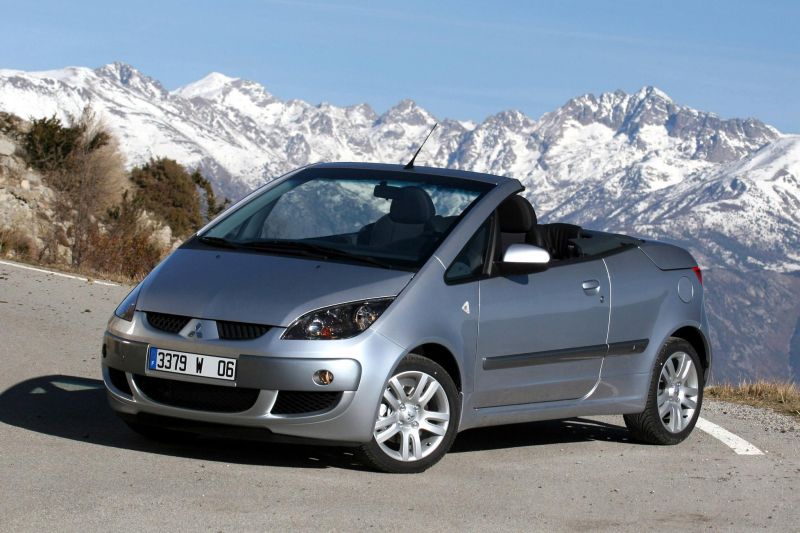
Jointly developed by Pininfarina and Mitsubishi, the Colt Cabriolet, known internationally as the Colt CZC, was only on sale in Australia for two years.
It came to our market in 2006 and left us in 2008. For its entire time in the Australian market, the range kicked off at $32,990 before on-road costs and extended to $37,990 before on-road costs.
Designed in a 2+2 seating configuration, the Colt cabriolet was manufactured in Italy at the Pininfarina factory, just like the Focus CC, Alfa Romeo Spider, and the second-generation Volvo C70.
There were two powertrains in the Colt Cabriolet; naturally-aspirated and turbocharged four-cylinder engines.
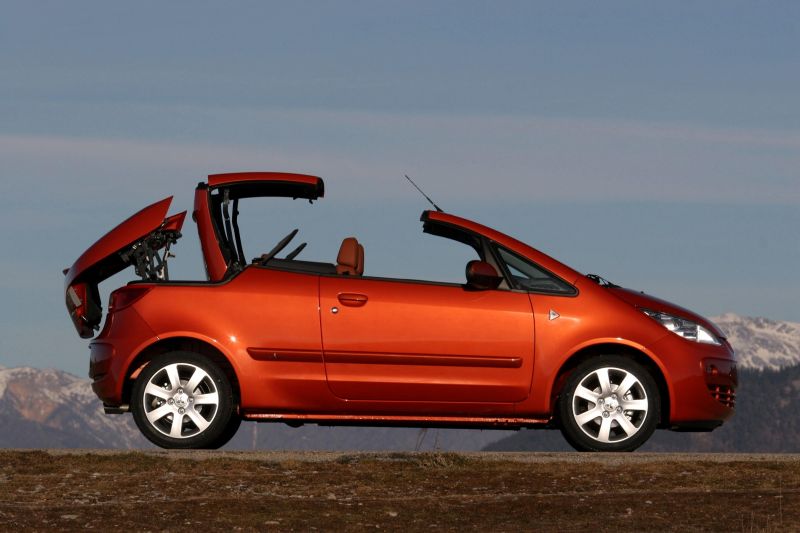
The base 1.5-litre four-cylinder produced 80kW and 145Nm, the turbocharged 1.5-litre four-cylinder produced 110kW and 210Nm.
These were both mated to a five-speed manual transmission, with no automatic available in Australia.
The Colt Cabriolet’s main feature was its folding hardtop roof. It was able to retract its roof electronically, but needed to be unclipped before doing so. It took around 30 seconds to operate.
On the safety front, the Colt cabriolet had four airbags, with ABS and EBD.
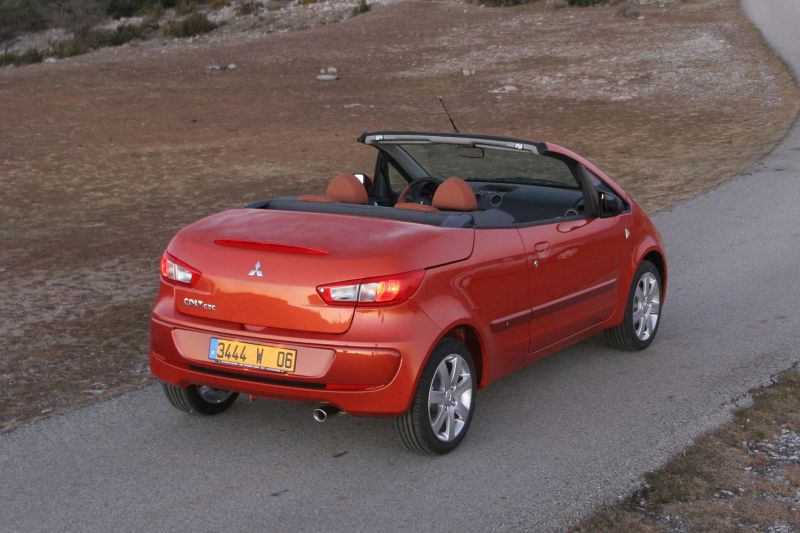
The Colt Cabriolet had features such as front and rear fog lights, and heated mirrors.
In 2007, Mitsubishi sold 522 Colt Cabriolets according to VFACTS. It outsold the Peugeot 206 and 207 CC.
Even in the previous year, 2006, the Mitsubishi Colt outsold the Peugeot 206 CC by one vehicle.
At launch, Mitsubishi reportedly aimed to sell around 50 Colt cabriolets per month.
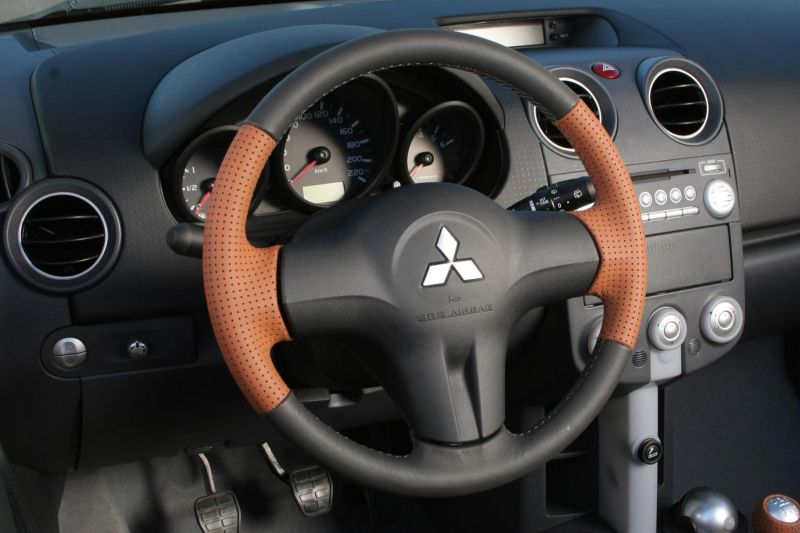
Reviews from when the Colt cabriolet was new indicated that the car had strange proportions due its folding roof and elongated boot lid, and barely any space in the back seats.
Apparently the turbo model was sprightly and fun to drive.
The Colt Cabriolet was discontinued in 2010, and Mitsubishi Australia hasn’t offered a drop-top since.
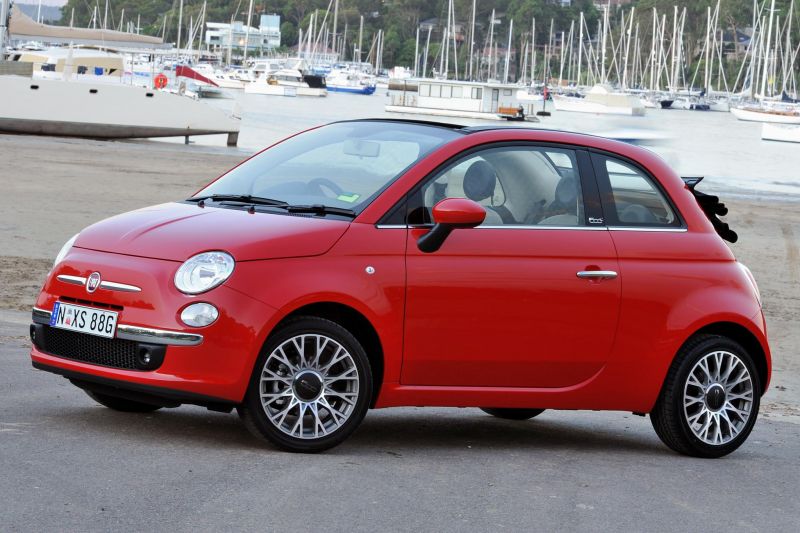
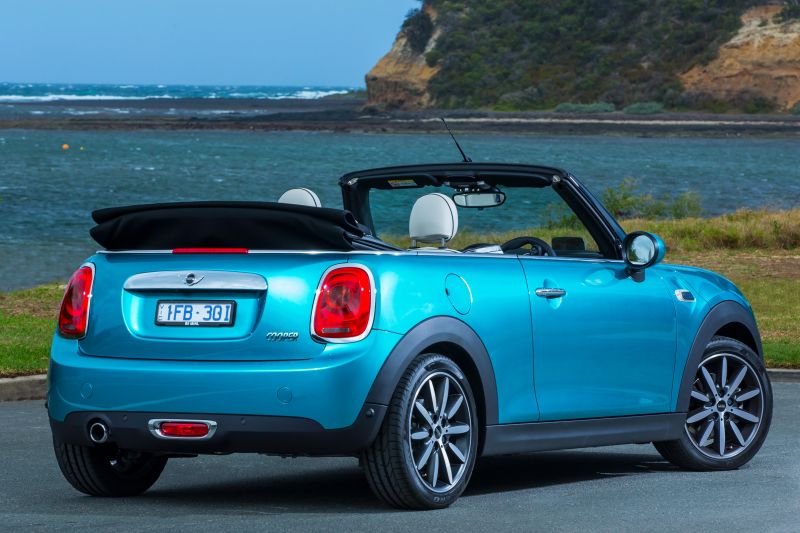

Choosing just 10 affordable convertibles to showcase from this time period was not easy. It truly was a different time in the automotive landscape.
As the trend of the affordable convertible died in the 2010s, there are only a few surviving: the Fiat 500C, Mini Cabrio, and enthusiast staple Mazda MX-5.
Convertibles were never top-sellers, but with the saturation of crossover SUVs now on the market, buyers no longer feel the same attraction. The GFC and trends such as electrification have also cut the budget of carmakers, forcing them to focus on higher-volume models.
Many convertibles are now predominantly something that only the luxury brands have in their range.
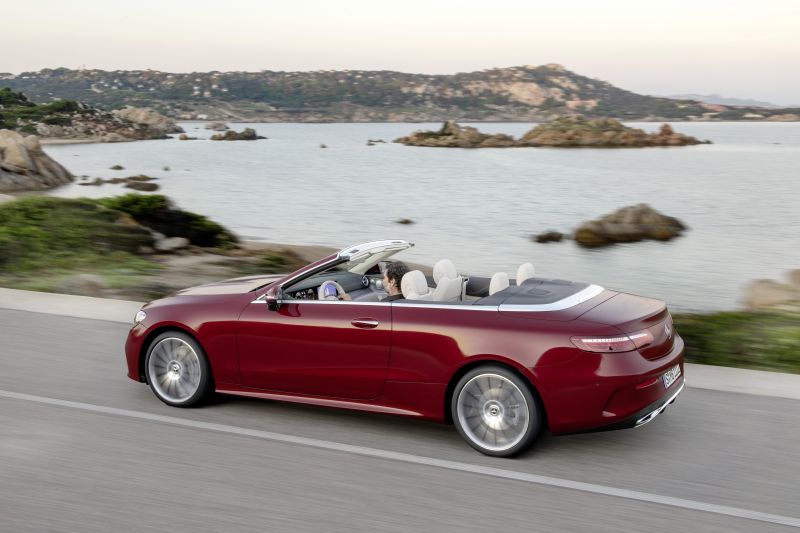
A report by Autocar said that the Mercedes-Benz is weighing up the future of its lineup, including convertible models.
“We have to recognise that the demand for cabriolets is dropping around the world – China is not a roadster-covering market and there are less buyers in Europe who decide on a cabriolet, compared to some years ago,” Mercedes-Benz CEO, Markus Schäfer said.
“It’s not that easy to build a good-looking cabriolet [as an EV].”


Andrew Maclean
3 Days Ago
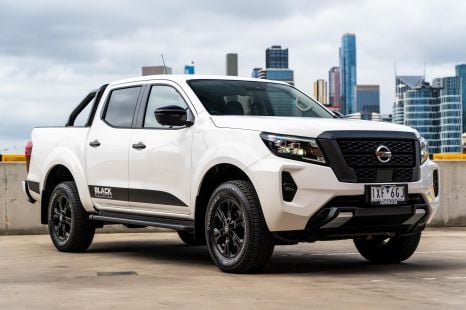

Josh Nevett
7.3
3 Days Ago
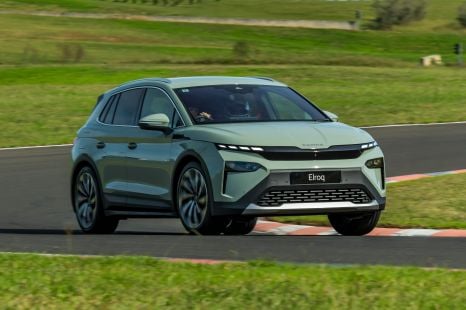

James Wong
2 Days Ago
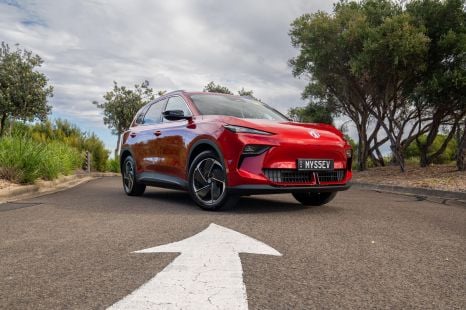

Andrew Maclean
2 Days Ago
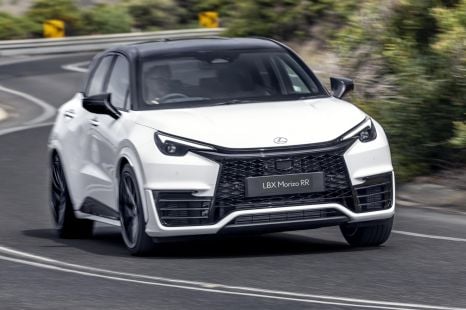

Josh Nevett
8
2 Days Ago
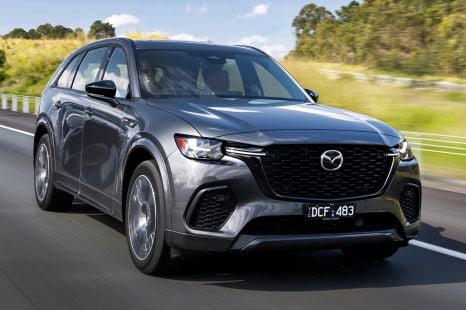

Jack Quick
7.9
13 Hours Ago